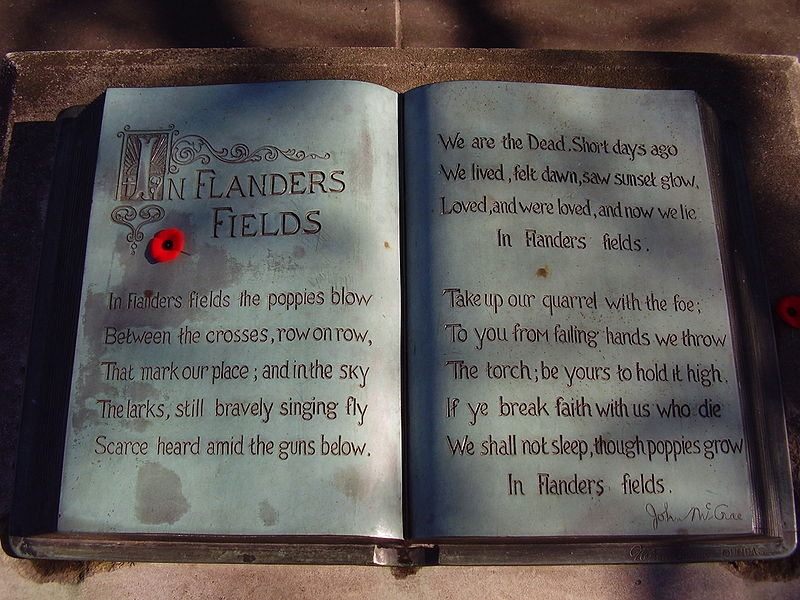
On #WorldPoetryDay, we bring you the tale of how a close personal loss on the battlefield of World War I inspired one of the most iconic war poems of all time - a thread (1/n) 

On August 4, 1914, when Britain declared war on Imperial Germany, John McCrae, a 41-year old Canadian physician and amateur poet was on a ship to the British Isles, looking forward to a welcome vacation (2/n) 

Destiny had other plans though. A veteran of the Boer War, McCrae volunteered to join the Royal Canada Expeditionary Force as a medical officer and gunner. He was part of the 1st Brigade, Canadian Field Artillery and was part of the 2nd Battle of Ypres (3/n)
Working out of a loosely dug 8 feet x 8 feet bunker, McCrae treated scores of wounded soldiers. The experience scarred him mentally - in a letter to his mother, McCrae called it a “nightmare” (4/n)
On May 2, 1915, Lt. Alexis Helmer, McCrae’s closest mate in the unit, died in the battle. A crestfallen McCrae performed Helmer’s memorial service himself. Lt. Helmer, like many others, was buried in a makeshift grave (5/n)
After the service, McCrae sat near the burial ground for some time. He had noticed that red poppy plants had sprung up all over the ground next to the graves. The sight left an indelible mark on him (6/n)
Next day, seated at the back of an ambulance, John McCrae penned a poem in memory of Lt. Helmer and his other fallen comrades. The poem that McCrae had written was published in the December , 1915 issue of London’s Punch magazine (7/n) 

McCrae’s creation became immensely popular and today is regarded as one of the most iconic war poems of all time. It is known as “In Flanders Fields”: (8/n) 

In Flanders Fields, the poppies blow
Between the crosses, row on row,
That mark our place; and in the sky
The larks, still bravely singing, fly
Scarce heard amid the guns below (9/n)
Between the crosses, row on row,
That mark our place; and in the sky
The larks, still bravely singing, fly
Scarce heard amid the guns below (9/n)
We are the dead. Short days ago
We lived, felt dawn, saw sunset glow,
Loved and were loved, and now we lie,
In Flanders fields (10/n)
We lived, felt dawn, saw sunset glow,
Loved and were loved, and now we lie,
In Flanders fields (10/n)
Take up our quarrel with the foe:
To you from failing hands we throw
The torch; be yours to hold it high.
If ye break faith with us who die
We shall not sleep, though poppies grow
In Flanders fields (11/n)
To you from failing hands we throw
The torch; be yours to hold it high.
If ye break faith with us who die
We shall not sleep, though poppies grow
In Flanders fields (11/n)
Pictures: From Wikimedia Commons
• • •
Missing some Tweet in this thread? You can try to
force a refresh















